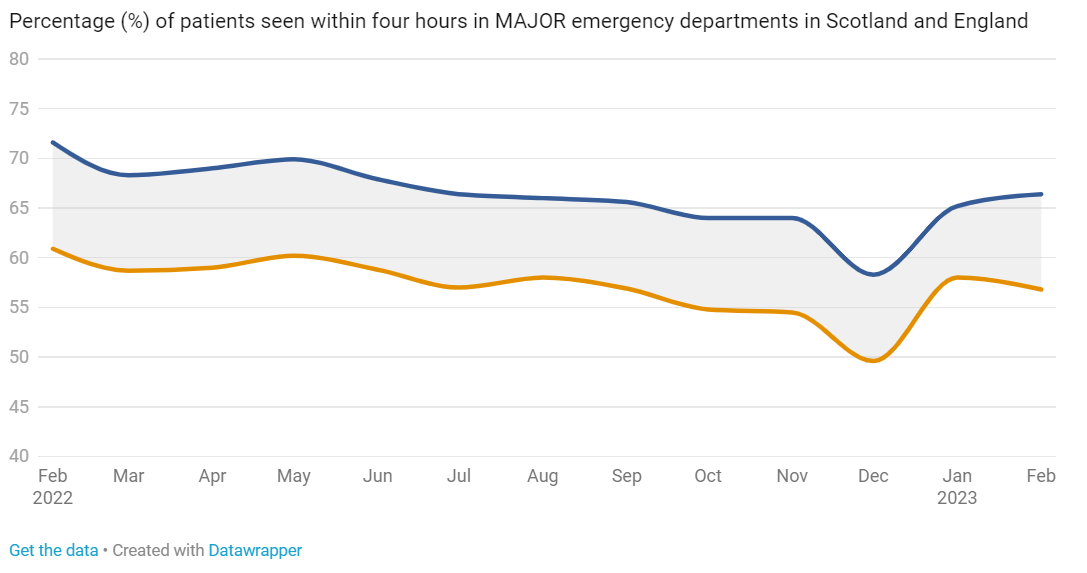Scotland’s accident and emergency (A and E) performance has been the subject of criticism from political parties and campaigners.
Humza Yousaf’s record as health secretary has continued to be in the spotlight since he became first minister.
Comparisons are regularly made between Scotland and England on A and E performance, but there are a number of differences in the ways each country measures and presents its data.
Ferret Fact Service looked into A and E statistics.

What is the standard for A and E performance?
Scotland aims for 95 per cent of patients in A and E to be seen and subsequently admitted, discharged or transferred within four hours. This is also the case in England.
However, this is only one measure of A and E performance, and does not give a full picture of a patient’s experience of emergency treatment. Data is also collected on the number and percentage of patients waiting over four, eight and 12 hours for treatment.
What are the differences between A and E performance measures?
There are differences in the way that A and E services are presented in statistics in Scotland and England.
In Scotland, there are 91 locations which have “A and E services”.
Thirty of these are classed as emergency departments, and are responsible for 80 per cent of A and E patients and 95 per cent of the times that the four-hour target has been missed.
The rest of the A and E departments include minor injury units, acute receiving units, and small community hospitals which see very few patients per week.
Weekly statistics published by Public Health Scotland refer to emergency departments only, while monthly stats include both emergency departments and other A and E sites.
In England, A and E departments are categorised differently. Statistics refer to type one, type two and type three services.
Type one refers to consultant-led services usually with 24-hour service, full resuscitation facilities and designated accommodation for A and E patients. These are the major A and E departments with the highest number of patients. There are about 170 of these departments.
Type two facilities are specialty A and Es, such as dental or eye clinics which accommodate patients. The third type covers all other A and E and minor injury units which are not considered to be major A and E departments.
Type one facilities in England and ‘emergency departments’ in Scotland are the most closely comparable and are the place where the majority of patients using A and E will end up.
How does the four-hour standard work?
For measuring patient statistics against this time frame, the clock starts counting at the moment the patient arrives in A and E. It stops when they leave the department and are admitted into the hospital for treatment or further assessment, or transferred from the hospital or discharged.
However, when someone arrives in an ambulance but cannot be transferred into the department, the clock on the four-hour standard will still begin 15 minutes after their arrival.
What are the differences between Scottish and English A and E departments?
The number of patients that have come to emergency departments in Scotland each month averages between 3,000 and 4,000 per department. There are big differences between areas in Scotland, with departments in the Glasgow area seeing nearly between 25,000 and 30,000 patients a month, while in Orkney the figure averages between 500 and 700.
In England, each equivalent type one facility sees on average between 7,000 and 9,000 patients every month. Again there is marked regional disparity in these figures.
What is the relative performance of Scotland and England over the last year?
Comparing emergency departments in Scotland to type one departments in England shows that Scotland has a higher percentage of patients seen within the four hour target, which has been consistently higher over the last 12 months.
However, when comparing all A and E departments, which includes those smaller facilities and specialist units, England has had a higher performance since May 2022.


Photo credit: iStock/Chalongrat Chuvaree














